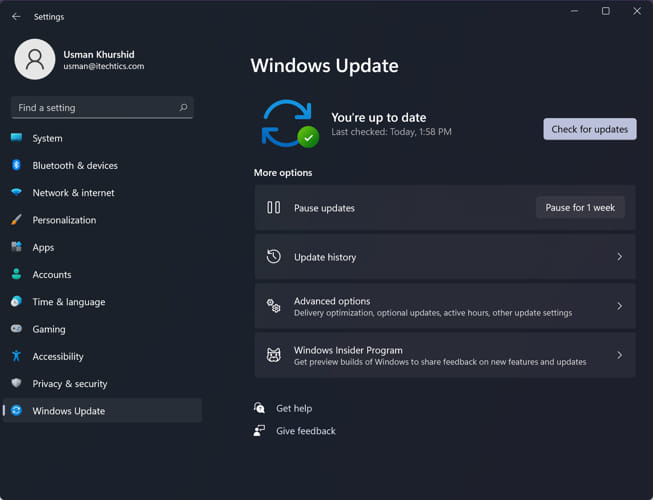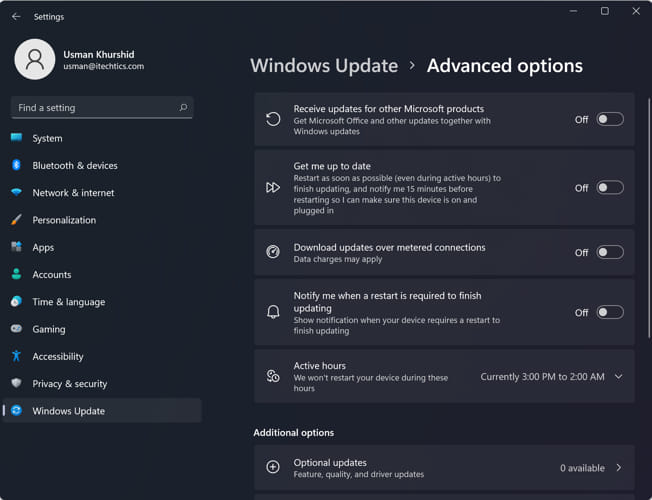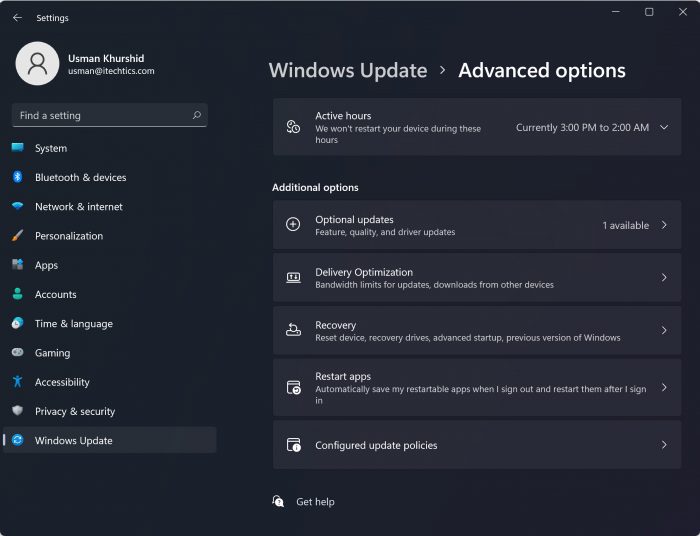Microsoft releases a bunch of security and quality-related updates to all its supported Operating Systems and other software, including the newest OS, Windows 11 and Windows 10. Not installing updates regularly will put your computer at risk of being hacked or infected with malware and ransomware.
Windows 10 and Windows 11 periodically check for Windows updates automatically. But there are times when you will want to change the update timing and frequency e.g., when you don’t want to download and install updates during your office hours.
Since most cumulative updates require the user to restart the system, it will be a disaster for you if the system automatically restarts after downloading and installing the updates.
In this article, we will discuss different configurations of Windows Update and how to run Windows Update using different methods in Windows 11.
Also check how to run Windows Update using PowerShell and the command prompt.
Table of Contents
Windows updates
Windows Update function checks for updates randomly every 17 to 22 hours. We can’t configure the time and date of these updates because this would bring down Microsoft’s own servers if millions of computers start checking for updates at the same time. So Microsoft randomized the update check function of Windows.
There are two types of Windows updates:
- Patch Tuesday updates (Cumulative updates)
- Daily updates
Microsoft releases Windows updates every second Tuesday of the month. This is called Patch Tuesday. Some minor or urgent updates are also released on the third or fourth Tuesday of the month.
Patch Tuesday updates are usually released to address newly discovered vulnerabilities in Microsoft software. Due to this, it is crucial to install these updates in order to remain protected against the latest vulnerabilities that hackers will exploit in their hacking attempts.
The second type of updates consist of updates like Windows Defender/Microsoft Security Essentials malware database updates, driver updates and .NET Framework updates etc.
It is unwise to disable Windows updates because this will stop Windows from updating its most critical tools like the antivirus, firewall, SmartScreen filter etc.
How to open and configure Windows Update settings
Since Windows 11 uses the same base as Windows 10, the basics of opening Windows Update remain the same with small changes in the UI.
To open Windows Update settings, go to Start Menu > Settings > Windows Update. Click on Check for updates button to check for new updates. Click Download and install if Windows finds and lists new updates.
You can also press Windows key + i to open Windows settings using a keyboard shortcut and then go to Windows Update section. Another way of opening the Windows Update settings directly is to go to Run –> ms-settings:windowsupdate.

In Windows 11, the update settings are easy to access and visually appealing. If you visit the Windows Update page, for example, it will tell you when Windows last checked for updates. You can then click on the Check for updates button to initiate the update process.
Using the Pause for 1 week button under More options will allow you to pause the updates immediately for one week. You can view the Update history, select Advanced options, or become a Windows Insider.
You can also check for Windows updates using cmd and PowerShell.
Advanced options
If you want to configure advanced options, you can open the Advanced options section on Windows Update settings page.
Advanced options will give you the following functionality:

You can enable or disable the following:
Receive updates for other Microsoft products. Enabling this option may be beneficial to you if you have Microsoft Office or other Microsoft software installed.
Get me up to date. By enabling this option, the user will be notified 15 minutes before the computer restarts after the Windows updates have been installed.
Download updates over metered connection . You should enable this option if you wish to download updates even if the network connection is metered.
Notify me when a restart is required to finish updating. Users will be informed of the need to restart Windows using a notification icon in the system tray.
Additionally, you can set active hours so that although Windows downloads and installs updates during this period, it will not automatically restart. You will be able to avoid interruptions during your work time.
There is another section called Additional options which lists the following options:
Optional updates. All optional updates from Microsoft will be listed here. Optional updates are not installed automatically. You will need to download and install these updates from this section.
Delivery optimization. This section lets you limit the bandwidth Windows can use for its updates process. You can also let the computer download updates from other computers on the same network. This could save some internet bandwidth. Under advanced options, you can either set a maximum download and upload limit or set a percentage of bandwidth that Windows can use for its update process.

Interestingly, Microsoft has added a few options to the Windows Update section that are not super relevant to Windows Update. For example, to access system Recovery settings, click on Recovery under Additional options. You can reset the system, return to the previous version of Windows or restart Windows with Advanced startup etc. This may be relevant when the system has become unstable after installing the updates and the user needs to return to the previous operational state.
Configured update policies
Another interesting section in Windows Update is configured update policies. If you have set any policies related to Windows Update in the local Group Policy Editor or from the Domain Controller, these will be listed here. This will help in figuring out which policies have been set by the network administrator.
Conclusion
The update process has become an important part of Windows ecosystem especially when Microsoft is leaning towards cloud based Operating System in the future. Windows 11 also comes with cloud support but we are not sure how much of it can run in the cloud and what we’ll need on our systems to run the Cloud Operating System.
Disabling updates is not the solution to any issues. Configuring Windows Update settings correctly will ensure that you are working with Windows without any issues. What do you think of the new update UI changes in Windows 11?
